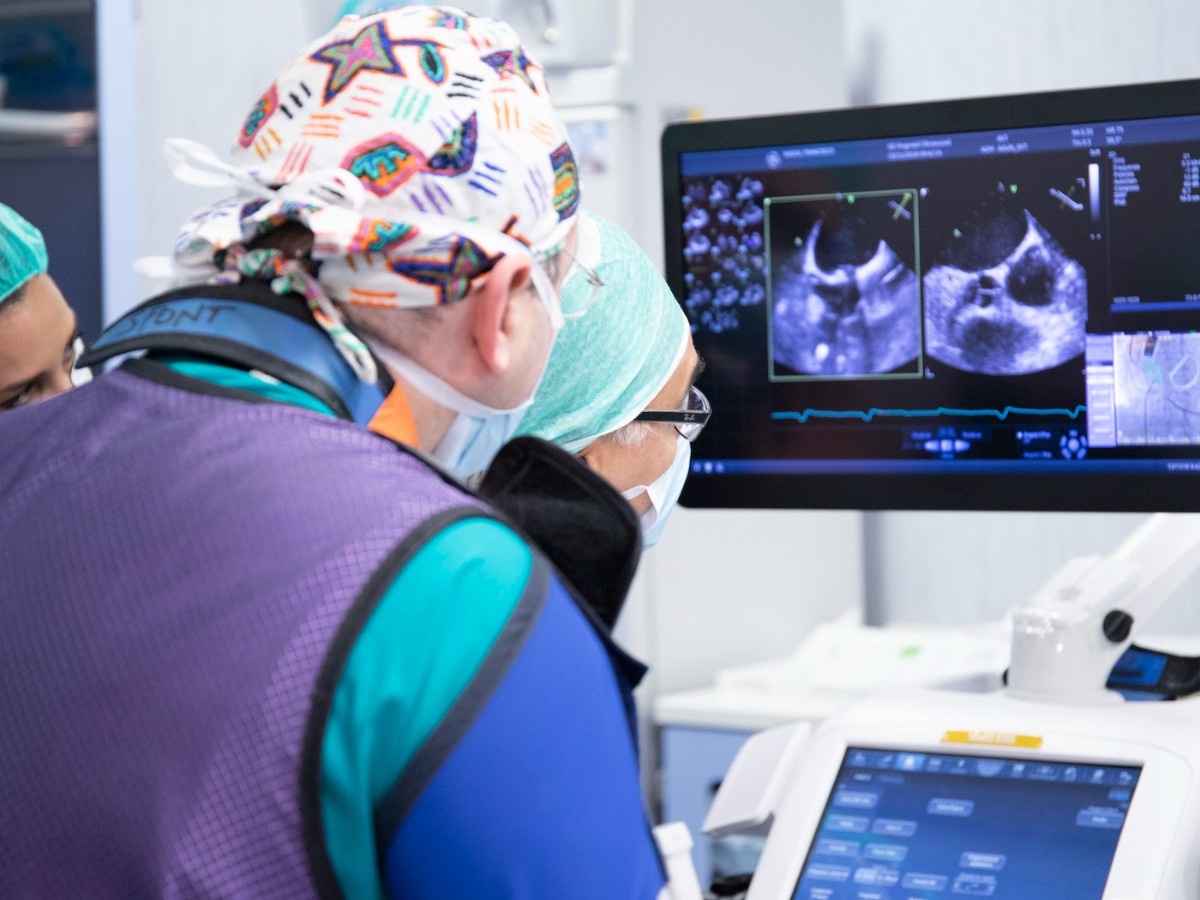By Professor Eigil Samset, PhD
We need to talk about cardiovascular disease (CVD).
Disease of the heart and blood vessels is the leading cause of death and disability in the world. In 2019, CVD killed nearly 18 million people, which is about one-third of all global deaths. Prevalence of CVD has doubled since 1990, and looking ahead, cases of cardiovascular disease are likely to increase substantially because of population growth and aging.[1]
As prevalence of disease grows, so does the need for treatment. Some forecast a 39% increase in cardiac interventions in the next 10 years, along with a rise in other cardiac procedures and tests.[2] Technology is evolving rapidly with the development of transcatheter therapies as an alternative to cardiothoracic surgery, especially for high-risk patients. This is impacting the care-and-treatment pathway and requiring more processing of data, new equipment and infrastructure. Simply put, CVD will require a transformation of already challenged healthcare systems.
Facing these realities and projections, those of us who work in the cardiology space feel a sense of urgency to improve access and quality of care for CVD patients so that they can live longer and with higher quality of life. We have work to do.
We must start making changes today to support hospital systems and healthcare workers and to prepare them for tomorrow. To serve patients well, cardiology care of the future calls for innovation and collaboration, particularly in four areas:
Optimizing the Care Pathway
One way governments in the United States, the U.K. and other countries are preparing for the rise in medical needs is by driving healthcare providers toward value-based care. This means shifting toward outcomes rather than activity. In other words, value-based care supports treating patients holistically, emphasizing quality of treatment over quantity of services.
Cardiac diseases are complex and often accompanied by several associated health conditions, like diabetes. In cardiology, value-based care means that care teams can consider how to optimize the entire care pathway, focusing more on the result and less on the cost of each individual test. More patients with CVD could access everything from early-detection technologies, such as handheld ultrasound and ECG, to more advanced diagnostic tests using the imaging equipment best suited for the individual patient’s risk profile. The hope is that leveraging advanced image guidance during minimally invasive interventions and using various monitoring technology, including remote patient monitoring in the home, can reduce hospital stays and lead to better outcomes.
Streamlining the cardiac care pathway with fully integrated solutions has the potential to reduce the time from diagnosis to treatment, leverage data to provide actionable insights and, ultimately, improve health, all at a better value for the patient.
Clinical Decision Support
Healthcare workers are dealing with demands tied to staffing shortages, burnout, trauma and sheer exhaustion, all exacerbated by the COVID-19 pandemic. On top of this, physicians face the burden of paperwork and documentation, which takes valuable time they could be spending with patients.
Technology that automates processes and allows for more efficient workflows can help. Take the echocardiogram, for example. Dozens of images and hundreds of measurements are necessary for supporting clinical decisions, but they can be tedious and time-consuming to acquire and process. And as patients undergo subsequent examinations, the reproducibility of measurement of cardiac function and remodeling is key to adequately assessing disease progression.
Artificial intelligence (AI) is bringing efficiencies to the process. For example, AI-driven deep neural network-based algorithms in GE Healthcare’s Vivid Ultra Edition are designed to deliver repeatable and faster measurements. Along with automation of the echocardiogram reporting, such as in our Centricity Cardio Enterprise software, the care team can spend less time on documentation and more on their patients.
Professor Eigil Samset.
Virtual Health
Remote collection of ECG data and subsequent interpretation by physicians in clinical settings were among the first uses of telehealth technologies. As technology continues to improve, telecardiology is helping providers assess and monitor the health and treatment compliance of patients remotely. This could help reduce capacity challenges while supporting holistic care.
GE Healthcare’s new partnership with AliveCor is a recent example of innovation and collaboration combining to increase convenience for patients and reduce cardiac-related hospitalizations. The partnership enables physicians accessing GE Healthcare’s MUSE — a cardiac management system that connects to and integrates into the electronic medical record — to view and interpret MUSE ECGs taken by patients using AliveCor’s KardiaMobile 6L personal ECG device, strengthening the care continuum from hospital into the home, or anytime, anywhere.
Empowering Heart Care Teams
Recent decades have seen a significant shift from open surgeries to minimally invasive surgery — or transcatheter therapy — in the case of coronaries, aortic valve surgeries, mitral valve procedures and tricuspid valve procedures. For example, the volume of transcatheter aortic valve replacements in the United States increased every year between 2011 and 2019, overtaking surgical aortic valve replacement in 2019.[3] These procedures require advanced technology in the catheterization lab.
GE Healthcare’s Allia interventional platform represents the culmination of a multi-year collaboration with interventional cardiologists, vascular surgeons and others to design a trusted assistant for image-guided therapies. With just one click, users can access all their essential functions, because they have their own personalized workplace that meets the operator’s specific needs and preferences when using imaging to perform procedures. Leveraging GE Healthcare’s Edison intelligence platform, Allia further empowers users with advanced software features that harness the power of AI to help optimize image quality and dose.
Let’s Get to Work
When confronting the growing crisis of cardiovascular disease, teamwork will prove invaluable. Care teams must work together, across specialties, to take advantage of new technologies that can improve diagnostics, optimize workflows and deliver the best treatments.
And as cardiology care grows more complex, collaboration across the community — including academia, the hospital sector, government and med tech — is key. By working together, we can accelerate innovations and provide better care to patients around the world so they can live longer and with higher quality of life.
REFERENCES
[1] “Cardiovascular Disease Burden, Deaths Are Rising Around the World,” American College of Cardiology, December 9, 2020, https://www.acc.org/about-acc/press-releases/2020/12/09/18/30/cvd-burden-and-deaths-rising-around-the-world.
[2] Chad Giese and Josh Aaker, “Cardiovascular Landscape 2022,” Sg2, 2022.
[3] John D. Carroll, Michael J. Mack, Sreekanth Vemulapalli et al., “STS-ACC TVT Registry of Transcatheter Aortic Valve Replacement,” Journal of the American College of Cardiology 76, no. 21 (November 2020): 2492–2516, https://doi.org/10.1016/j.jacc.2020.09.595.






